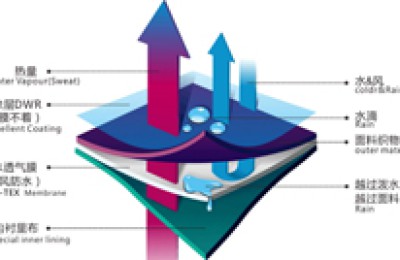As of 6 p.m. Eastern Time on March 19, the United States had reported a total of 13,350 confirmed cases of COVID-19. In less than 18 hours, there were 13 new confirmed cases. 3,899 cases; as of 18:00 on the 19th local time, the cumulative number of confirmed cases in Italy has risen to 41,035; Prince Albert II of the Principality of Monaco became the first head of state to be infected with COVID-19.
Whether it is textile foreign trade or physical textile and apparel, they are all affected by the cancellation of orders, and the business is not as good as before. The withdrawal of foreign trade orders has deeply affected online and offline clothing. The textile industry has never existed alone. So what is the printing and dyeing industry as an intermediate link in the textile industry?
Printing and Dyeing Factory: One-third of the cylinder is empty
This morning, Fangke Printing and Dyeing Division ” There is a chat message in the Shaoxing [7] community called Printing and Dyeing People, from which we can get a glimpse of some of the current phenomena.
Another piece of information is the “Printing and Dyeing People” [5] community of the Textile Printing and Dyeing Division. How is the market situation this year? Then we can see that the printing and dyeing market is unevenly hot and cold.
Let’sfirstlookatsomeonewhosaidthatthisyear’sorderswereproducedatfullcapacity.AccordingtoWangFeng,editor-in-chiefof”DyeingandPrintingMan”, it is a large-scale company in Jiangsu. Textile printing and dyeing enterprises, mainly engaged in the production, printing and dyeing of home textiles.
Another person said that the dyeing workshop was one-third empty. According to Wang Feng, editor-in-chief of “Dyeing and Printing Man”, it is a printing and dyeing company in Fujian, mainly engaged in the dyeing production of nylon and lace. , the main customers come from local Fujian and orders for swimwear fabrics from Chaoshan, Guangdong, and Keqiao, Shaoxing. Affected by the market, orders for swimwear fabrics from customers in Chaoshan, Guangdong have been significantly reduced, and production has been compressed. The original production capacity has been reduced from 45 tons per day to the current 30 tons. Due to the shortage of production capacity, there are empty dyeing vats, and there is no work to be done. Some workshops are even half-open, and sometimes the machine is shut down for three days after being started for one day.
Another situation is that foreign trade orders are suspended. No one thought that one day, this situation would fall on them. For a while, printing and dyeing factories that rely on foreign trade processing and production may have One day you will suddenly receive a call to cancel your order, and there will be nothing to do.
Weaving factory: The cloth cannot be sold, but the expenses are still a lot!
According to “Cloth Factory” news: At the beginning of the resumption of work, many bosses were very happy, thinking that they would make money after resuming work. But less than a month after work started, many cloth bosses said: “Originally March was the time to destock, but this year the inventory is difficult to eliminate and orders have decreased. Now our gray cloth inventory has been 60 days old. The popularity is slowly fading, and there is no end in sight for the next off-season.”
In addition to reduced orders, weaving manufacturers are also facing cost problems, that is, reduced income, but still a lot of expenses. “Labor costs are rising every year, and this year they have risen even more sharply. We have increased the wages of workers by 200 yuan/month. It takes at least five years to train a skilled worker. Of course, we hope to retain them more. Others Factories are increasing, and we can only keep up.”
In addition to labor costs, the bigger one is the expenditure on raw materials. For cloth bosses, they most hope that the raw materials will be stable, and the rise and fall will have a great impact on them. , Polyester yarn has been falling at present, and it has dropped by more than 1,000 yuan/ton from the beginning of the year to now. “Although it is cheaper to buy raw materials, the price of cloth is also accelerating in depreciation. I have already lost a lot of money on the cloth in my warehouse.”�One hundred thousand. “A cloth boss was secretly anxious.
Trader: Domestic and foreign trade orders have continued to decline or even been cancelled
A trader in the nylon industry revealed: “Our orders from Europe in the first quarter of this year dropped by 20% compared to last year. Orders are expected to decrease in the future. “Coincidentally, another cloth boss also said: “Although we do not do foreign trade, our end customers are exporting to Europe, the United States and other places, which has indirectly affected us. Domestic trade this year is not easy to do, and several major Although the fabric trading market has basically returned to normal, the flow of people has dropped sharply, and there are very few people looking for samples and sampling. “
Both domestic demand and foreign trade are sluggish, and both domestic and foreign orders are facing reduced or even canceled orders. A R&D-based trading company in Zhejiang revealed: “Orders in the first quarter of this year have shrunk at least At this time, we chose to practice our inner strength and start developing new patterns and techniques to prepare for the second half of the year. ”
At the same time, many traders are preparing to appropriately adjust the proportion of domestic and foreign trade this year and focus on domestic trade, which will inevitably lead to more intense competition in the domestic trade market.
Faith and thinking
Global economic integration, for the textile and apparel industry, the instability of the international market will continue. Although the performance of the domestic market is not impressive enough, the crisis is also a test of the comprehensive strength of textile printing and dyeing enterprises. Big waves wash away the sand, survival of the fittest, natural laws, and economic laws. We must believe that it will pass. It is a normal phenomenon.
But how to explore domestic demand, in fact There is still potential for development. There are 1.4 billion consumers who are indispensable for food, clothing, housing and transportation. On the other hand, the problem of overcapacity is becoming more and more prominent. Enterprises urgently need to find low demand areas in subdivided fields. The days when the machine rings and gold is gone, in Shenzhen When you are stuck in a quagmire, thinking calmly may be more likely to get out than struggling. There will never be a lack of demand for good products in the market. Working hard to polish products is the way to survive. For the manufacturing industry, product is king and it will never go out of style. standards.
</p





